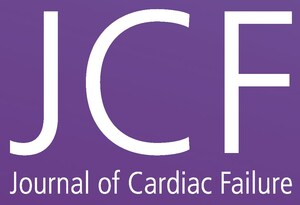ROCKVILLE, Md., April 23, 2020 /PRNewswire/ -- The COVID-19 pandemic presents an unprecedented crisis for patients, clinicians, and healthcare systems. Most US healthcare systems have reduced ambulatory outpatient clinics - pillars of the longitudinal care of patients with chronic illnesses. In this context, synchronous audio/video interactions, also known as virtual visits (VVs), have been suggested as innovative and necessary alternatives to in-person care.
A new paper developed by members of the Heart Failure Society of America for upcoming publication in the Journal of Cardiac Failure, reviews the platforms, reimbursement models, advantages and limitations of virtual visits. There is great potential to increase visits and maintain close patient interactions virtually.
"While generally disruptive, the COVID-19 epidemic has allowed healthcare providers to look at a new way of meeting with patients who need treatment but may be unable to make the trip into the office," said primary co-author Eiran Gorodeski, MD, FHFSA. "We should not underestimate the importance of successful virtual visits now or in the future as I believe this is increasing our connectivity and allowing even older patients to explore online alternatives to care."
Prior to the COVID-19 pandemic, there was little impetus for clinicians to learn or embrace VVs. In the current era, many clinicians have been forced to learn and use VVs. After the COVID-19 crisis recedes, patients may continue to have concerns about in-person office visits and travel and prefer to continue with a degree of social distancing. Many patients may continue to prefer VVs.
"The quick transition to virtual visits has challenged us clinicians to get creative with technology. Already, innovative approaches to performing physical exams and medication reconciliation are emerging; and often include participation of other family members in the home alongside the patient," said primary co-author Parag Goyal, MD. "Moving forward, I think it is going to be crucial for us as clinicians to define processes that ease patients' concerns and allow them to effectively engage in technology so they can receive the full benefit of virtual visits."
The COVID-19 pandemic has generated an important opportunity to learn about delivering HF care in a different way that should be fully embraced well beyond the current crisis.
The full article is currently available for preview in the Provider Resources section of the HFSA Coronavirus Resource Center at hfsa.org/coronavirus and via the online version of the Journal of Cardiac Failure.
About the Heart Failure Society of America
The Heart Failure Society of America, Inc. (HFSA) represents the first organized effort by heart failure experts from the Americas to provide a forum for all those interested in heart function, heart failure, and congestive heart failure (CHF) research and patient care. The mission of HFSA is to provide a platform to improve and expand heart failure care through collaboration, education, innovation, research, and advocacy. HFSA members include physicians, scientists, nurses, nurse practitioners, pharmacists, and patients. For more information, visit www.hfsa.org.
About the Journal of Cardiac Failure
The Journal of Cardiac Failure publishes peer-reviewed manuscripts of interest to clinicians and researchers in the field of heart failure and related disciplines. These include original communications of scientific importance and review articles involving clinical research, health services and outcomes research, animal studies, and bench research with potential clinical applications to heart failure. The Journal also publishes manuscripts that report the design of ongoing clinical trials and editorial perspectives that comment on new developments pertinent to the field of heart failure or manuscripts published in other journals.
Media Contact: Laura Poko, 301-798-4493, ext. 226, [email protected]
SOURCE Heart Failure Society of America

Related Links
WANT YOUR COMPANY'S NEWS FEATURED ON PRNEWSWIRE.COM?
Newsrooms &
Influencers
Digital Media
Outlets
Journalists
Opted In






Share this article